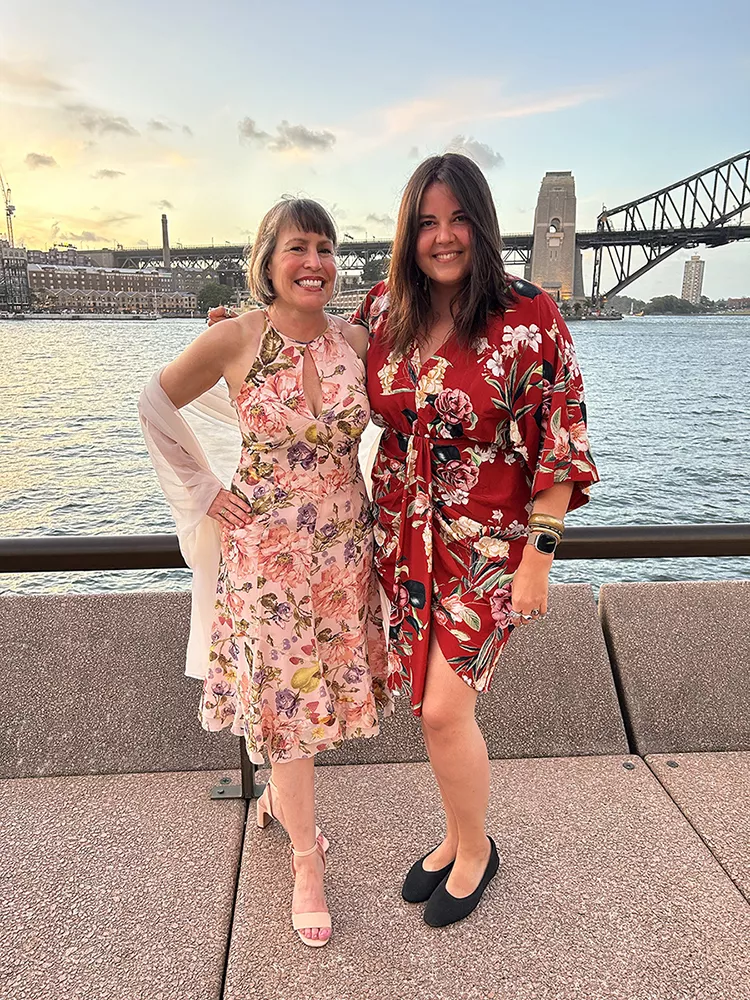Generations: A Chance Meeting Down Under
Archaeology alums become coworkers at the University of Sydney
Tamar Hodos ’90 is a leading expert in Mediterranean Iron Age archaeology who spent much of her career in the United Kingdom. Ioana A. Dumitru ’11 is a digital archaeologist working in East Africa and Southwest Asia who came to Bryn Mawr from Romania. In 2023, their paths converged in Australia, when they both joined the faculty at the University of Sydney.
IOANA DUMITRU: I had just arrived, and I heard Tamar was coming. So, I obviously stalked her because–
TAMAR HODOS: This is the Google era!
ID: Voyeurism is, like, 20 percent of why I got into archaeology. I got Tamar’s CV and I thought, ‘oh, of course!’
TH: I was so, so delighted because I am completely on the other side of the world here. To know there is someone here who understands a part of me in a way that nobody else does has been enormously helpful. I feel really far away from family and friends and life as I have known it, and Ioana is providing an anchor for me.
ID: I’m enormously grateful you’re here. Having that anchor to someone who went through similar experiences, so many of the things we refer to in the same way. . .
TH: And we’re both relatively new to Australia! I joke that I’m on my third variant of the English language. I was recruited to direct the Australian Archaeological Institute in Athens. It was founded 40-odd years ago by Professor Alexander Cambitoglou, who taught at Bryn Mawr in the late ’50s and early ’60s, so there’s this lovely symmetry that goes back to the importance of Bryn Mawr’s archaeology department and its legacy.
ID: The Bryn Mawr mafia!
TH: Some of the leading scholars of Classical and Near Eastern archaeology are associated with Bryn Mawr and legions of students came to work with them. I often feel that with women my generation and older, there’s a really high proportion who have a Bryn Mawr connection.
ID: I realize that I have so many examples that I had forgotten because it just feels normal to me. On our campus just two months ago, we had a seminar series and went out after for a drink. I’m sitting at a table with Robin Torrence (’71); we hadn’t met her before, and she’s very vivacious and funny, and all of a sudden, I said, ‘Robin, this may sound strange, but did you go to Bryn Mawr?’ She was radiating this Bryn Mawr-ness.
TH: You just understand each other.
ID: I remember distinctly where I was when I got a phone call from Bryn Mawr. It was very late in Romania, and I remember telling the person on the other end that she’d made my day, my year, my life.
TH: I actually cannot imagine having gone anywhere else. It shaped me so much in my sense of self.
ID: Everybody is empowered to be a human who gets to make choices and be treated with respect.
TH: I know I have a voice, and I have every right to be heard because I was heard at Bryn Mawr. And I don’t think any other institution is like that.
ID: I think it is pretty rare.
Published on: 05/28/2024

